2023 Hyundai Ioniq 6 First Drive: Range rider
Today’s roster of electric cars is ever-growing, but a colleague at another publication remains skeptical. “I’m not going to even consider buying one until it has a range of 500 miles,” he says, “and can recharge in 10 minutes.” A reasonable price would help too, he adds.
Hyundai’s new Ioniq 6 sedan isn’t there yet, but even he’d have to admit it’s getting closer. Range depends on the specific version, but the rear-wheel-drive Ioniq 6 SE is EPA-rated at 361 miles, and with a 350-kW rapid charger it can achieve 80 percent battery charge in 18 minutes. The SE also has a starting price $46,615 including delivery charge.
Not 500 miles or 10 minutes, but it’s knocking on the door. And that MSRP is below the February 2023 average new-car price of $48,700.

Hyundai is building an impressive little family with its growing electric sub-brand, Ioniq. The Ioniq 5 sport-ute won most every award available last year, and there’s little doubt this Ioniq 6 sedan, built on the same basic E-GMP platform, will be a contender for those same honors in 2023. The Ioniq 7, a bigger SUV with three-row seating, shows up in 2024.
With those three vehicles, Hyundai pretty much has the modern electric-vehicle market covered. Should you want a compact electric SUV, the latest Hyundai Kona Electric, a cousin to the Ioniq clan, debuts at the New York Auto Show this week.
Hyundai did far more with the Ioniq 6 than simply plop a sedan body on the Ioniq 5’s electric skateboard-style platform. The Ioniq 5 is just 182.5 inches long, while the Ioniq 6 is stretched to 191.1 inches. The wheelbase of the Ioniq 6 is just 116.1 inches, however, compared with the Ioniq 5 SUV’s wheelbase of 118.1 inches. The Ioniq 5’s wheelbase is extended to the very rear and front of the vehicle, while the overall longer Ioniq 6 is more centered. The two vehicles look nothing alike outside but share some interior components.
Power units are similar. Both employ lithium-ion battery packs: The Ioniq 6 has a 480- or 697-volt battery, with 53- or 77.4-kWh capacity. The “standard range” battery is good for 240 miles, and while the bigger battery is rated at 361 miles, that apples to the rear-drive SE trim and its 18-inch wheels. Move into the more deluxe Limited and SEL+ trims with their larger wheels and the range declines, especially if you get all-wheel drive.

Our test car was an all-wheel-drive Limited with the 77.4-kWh battery, wearing the stylish (but range-decreasing) 20-inch wheels. The higher drag coefficient from the wheels, plus the extra weight of four driven wheels, lowers range to an EPA-rated 270 miles. It carries a base price of $56,100, and with options ($1000 for “Gravity Gold” matte paint, a new color for Hyundai, plus $210 for floor mats), the total price is $58,425, including shipping. A comparable Ioniq 5 would be about $55,500.
You’d think a car this size and with a reasonably large battery—it alone weighs 1057 pounds—would feel heavy. Not the case; at about 4300 pounds, the Ioniq 6 is pleasantly light on its feet, despite being a whopping 800 pounds heavier than the larger-sized Hyundai Sonata Limited hybrid. Thanks in part to the 6’s low center of gravity, only in the tightest corners (at medium speed or greater) does the extra weight make itself known. On the upside, the bulk helps the Ioniq 6 cruise in luxury-car comfort. The funky-looking four-door eats up potholes like M&Ms.
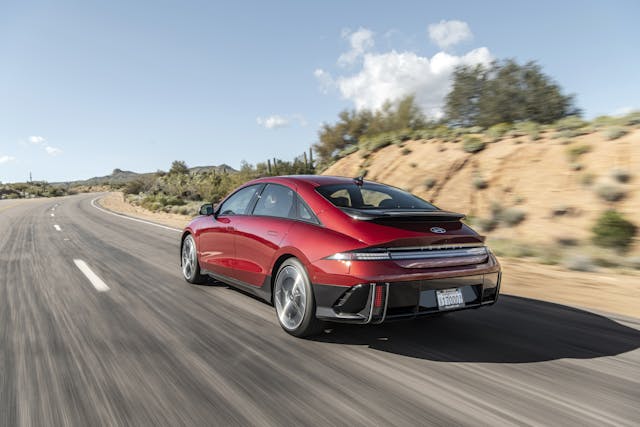
Noise, vibration, and harshness are even more difficult to weed out in an EV, because the mostly silent electric motors do nothing to mask unwanted sensations. Even still, this is a profoundly quiet car, with minimal wind or road noise. Only under acceleration did we notice any drivetrain noise; no doubt with that in mind, Hyundai programmed three separate synthetic soundtracks to play when the go-pedal is pressed. Each of them struck us as the equivalent of clothes-pinning playing cards to the spokes of your Schwinn: cheesy then, cheesy now. We more enjoyed the quiet, unless interrupted by the competent Bose Premium sound system.

Inside, the Ioniq 6 has a 12.3-inch display with navigation, wired for Apple Car Play and Android Auto. It’s positioned next to another 12.3-inch instrument panel in an attempt to produce the effect of one large display. The heated and cooled front seats were commendably comfortable, even for long stretches behind the wheel. The rear seat had adequate room for a pair of six-footers, and a smaller person in the middle wouldn’t complain, thanks to the flat floor. The tapered exterior roofline might make you think rear headroom is limited, but it isn’t bad, even with the large sunroof.

Up front, controls are mostly intuitive. The smallish leather steering wheel—the only leather you’ll find, as the seats are trimmed in “H-Tex” synthetics—feels just right. The center of the steering wheel has four lighted dots (Morse code for “H”), as in the Ioniq 5, and the color depends on what mode you’re in: green for eco, red for sport. It’s a nice little touch.
Window switches are in the middle of the console, allowing for more stylish, mood-lit door panels and likely some cost savings for the company. The inside is nicer than the Tesla Model 3, the Ioniq 6’s most direct rival, but that car has never been known for the lushness of its interior.
Visibility is good, but you lose a little with the wide A-pillars. Total interior volume is 114.2 cubic feet, compared to 120.4 for a Sonata. One more comparison: The Sonata has 16 cubic feet of truck space, while the Ioniq 6 has just 11.2, reached through a rather narrow access. The front “frunk” has half a cubic foot of storage area, about enough for a laptop.
Outside, the Ioniq 6 is striking. Strikingly handsome? We think so, but opinions differed at our press drive outside Phoenix, Arizona. If you like LEDs, you’ll be impressed; inside and out, it’s as if the designers just discovered LEDs and used them everywhere.
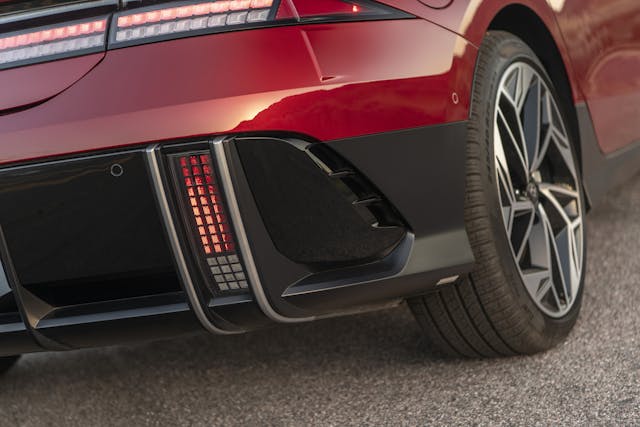
The styling touches are retro-futuristic in what is becoming an Ioniq trademark, but the general shape is slightly Mercedes-like. Some observers found the big, dual rear spoilers a little cartoonish for a car with 320 horsepower and 445 lb-ft of torque. Make no mistake, though, the Ioniq 6 is quick—our 0 to 60 mph time was just under five seconds—but the car can’t seem to decide if it’s sporty or luxurious. The Korean design chief called it an “electrified streamliner,” which seems on target. If there’s a downside, though, it’s in the styling. How well will it age? Will enough people like it in four years to guarantee strong resale value? Hyundai is gambling here, and no one knows how it’ll turn out.
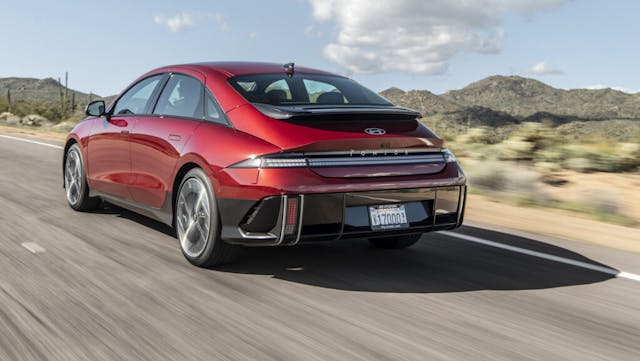
On the road, the 20-inch tires and futuristic wheels aid cornering and braking, which is quite good. Steering is precise and linear. There are various selectable levels of regeneration, down to one-pedal driving that requires no brake pedal except for a more abrupt-than-usual stop. The Ioniq 6 offers all the safety features you’d expect, including blind spot monitoring and a surround view monitor.
We liked the Ioniq 6 a lot, a little more than even the Ioniq 5. It’s undeniably polarizing, however, so even if it’s not your thing you have to admire that Hyundai is swinging for the fences. More so, even, that a brand finding success with its sport-utes isn’t giving up cars.
Who knows if or when EVs will meet my colleague’s checklist. For us, though, if we were in the market, the Ioniq 6 is exactly the kind of electric car we’d want as a daily driver.
2023 Hyundai Ioniq 6 Limited
Price: $56,100 / $58,425 (base / as tested)
Highs: Confident power. Smooth ride, even on rough roads. Quiet interior. Controls easy to master. Bold styling.
Lows: Modest trunk and frunk space. Unexceptional range for base model. Gets pricey beginning with the Limited trim. Styling perhaps too bold.
Takeaway: Unlike anything on the market, yet a potentially promising—if not odd—shape of things to come.
***
Check out the Hagerty Media homepage so you don’t miss a single story, or better yet, bookmark it. To get our best stories delivered right to your inbox, subscribe to our newsletters.
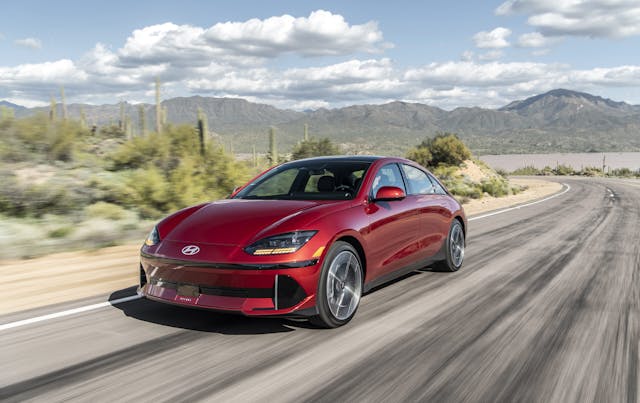
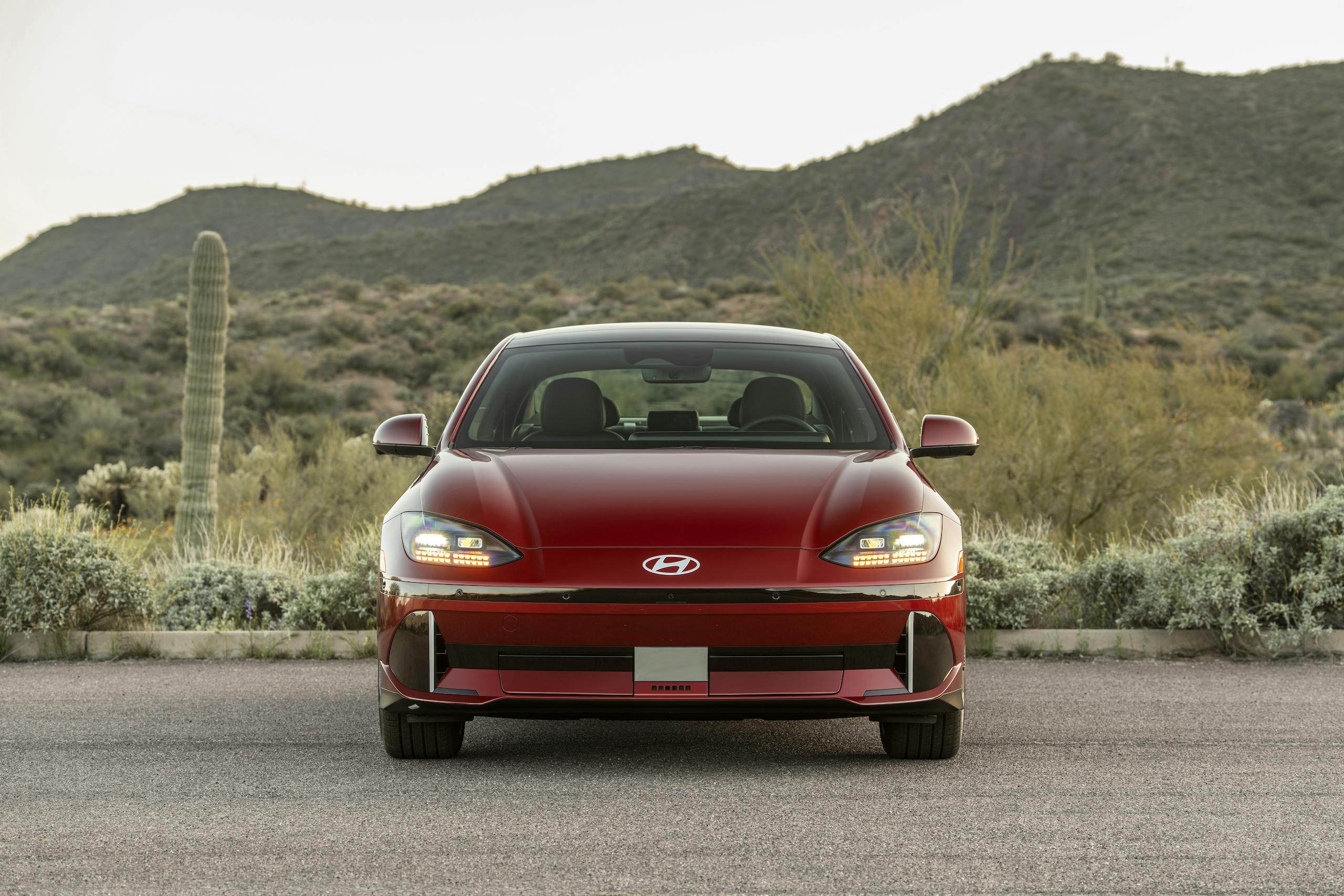
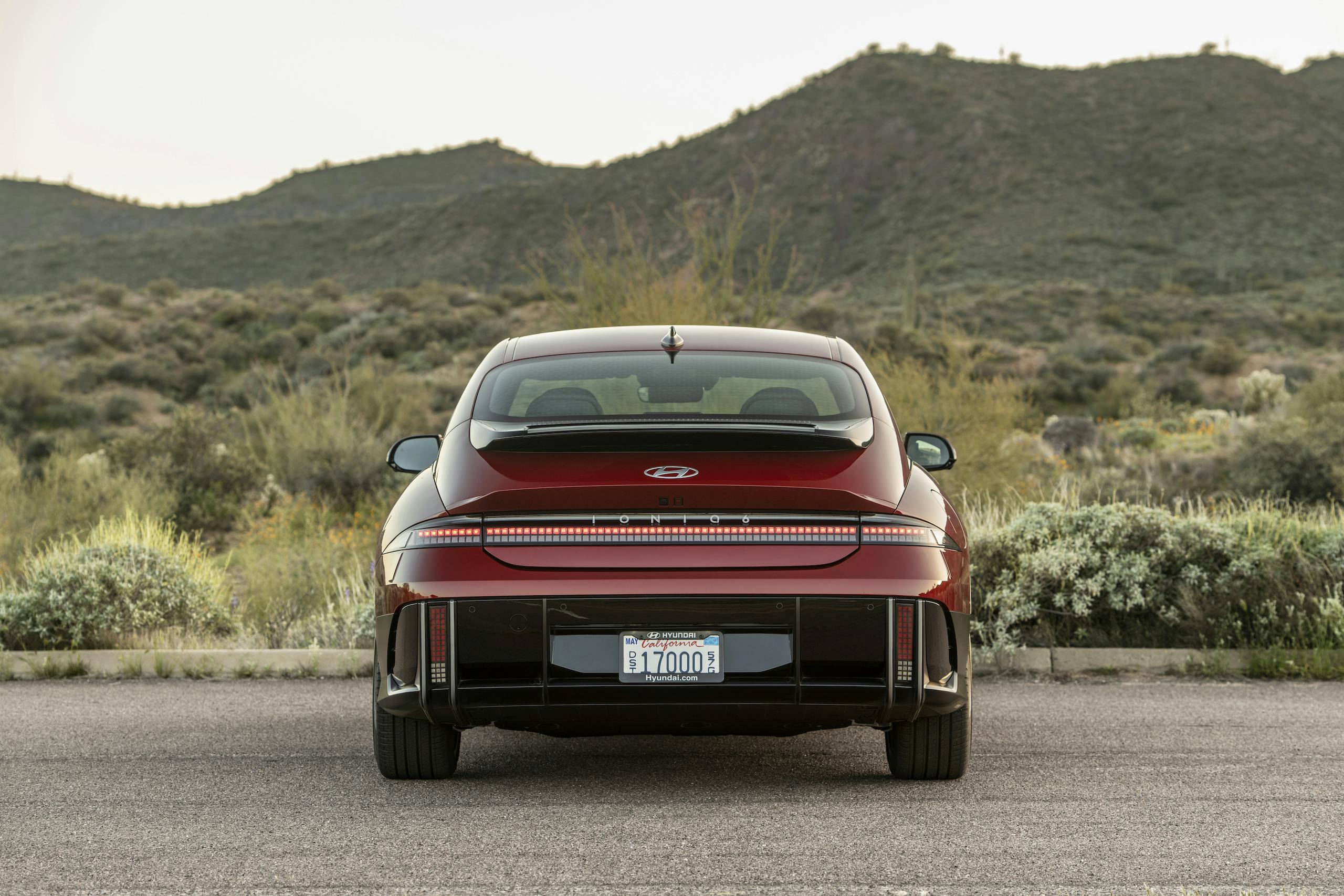
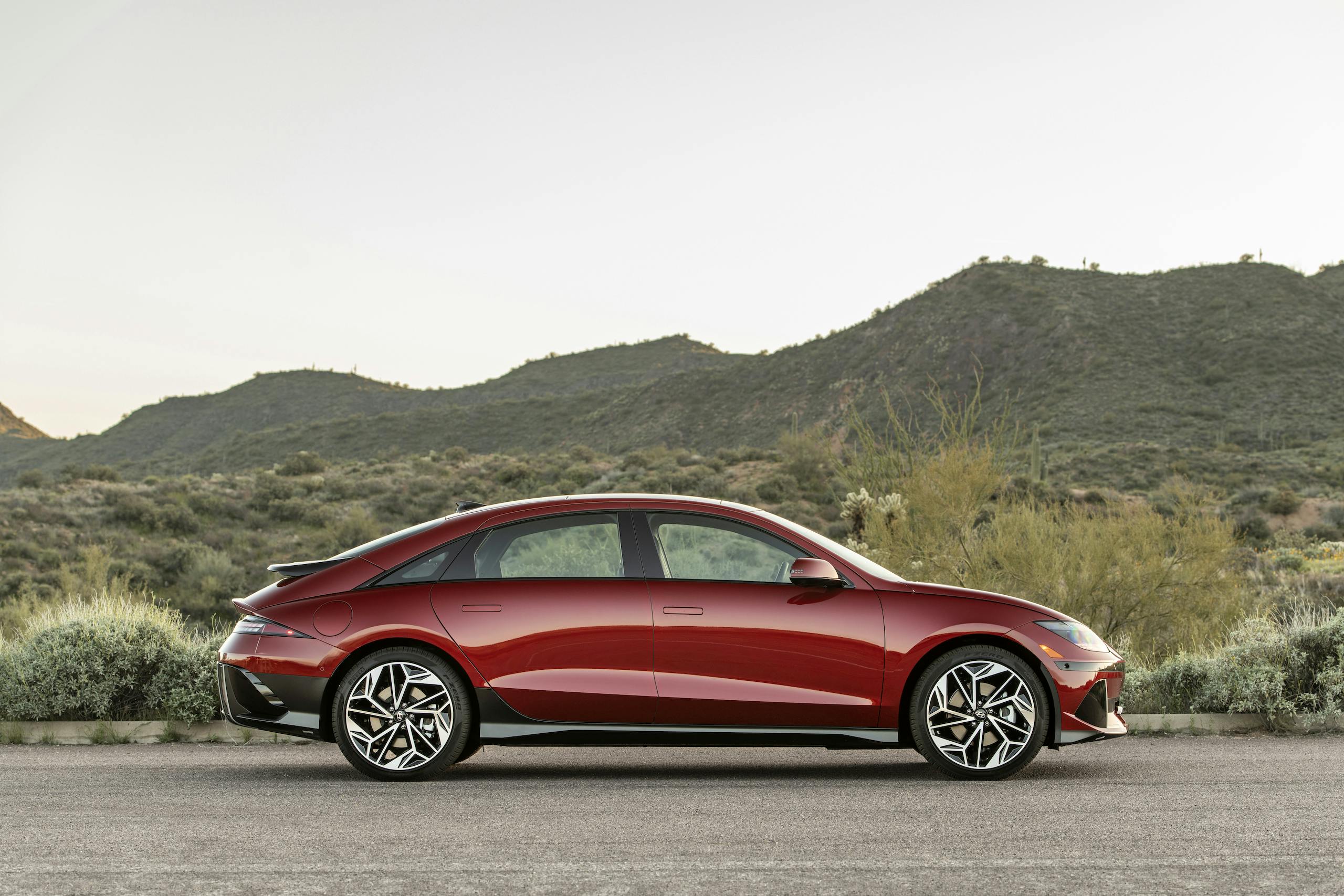
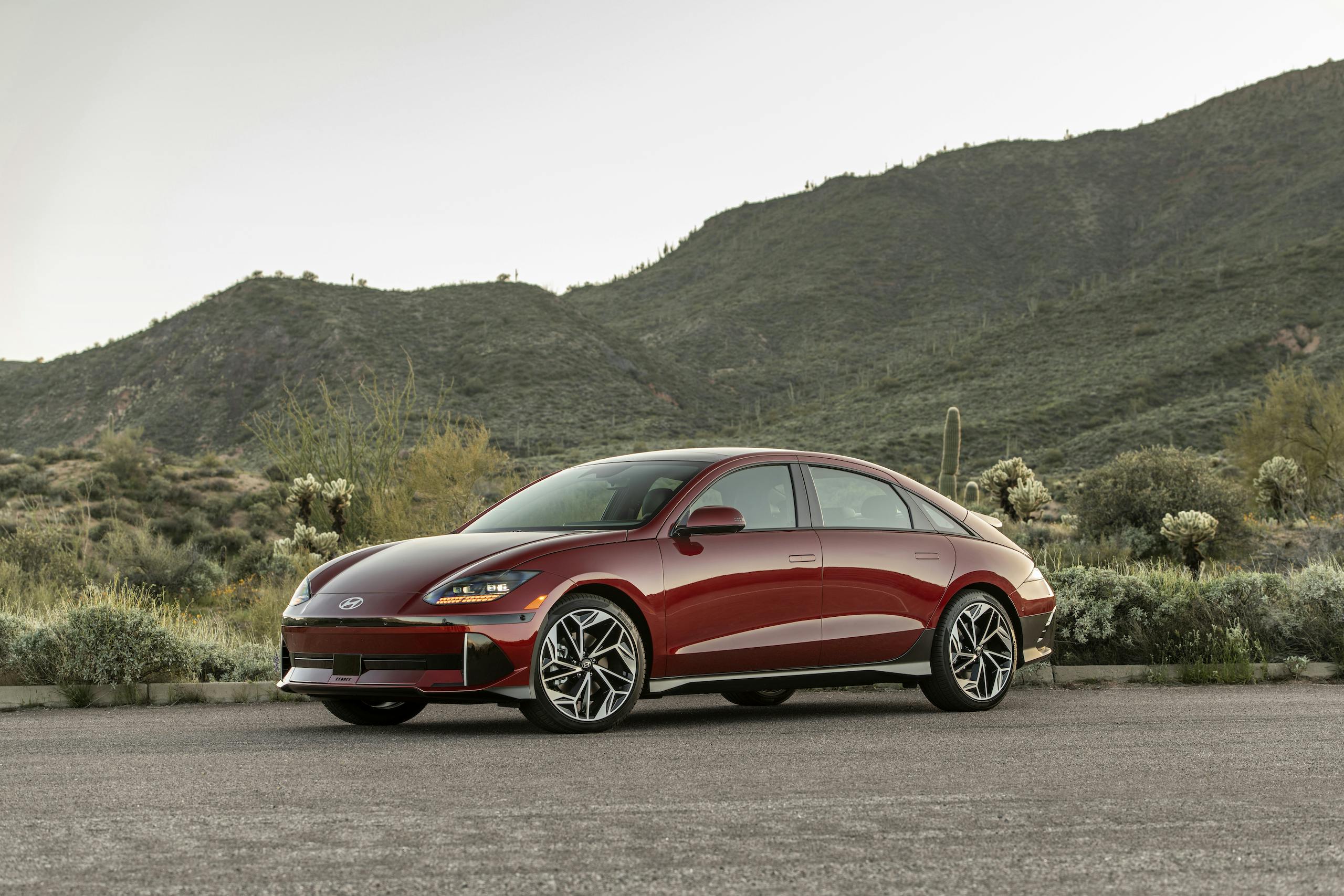
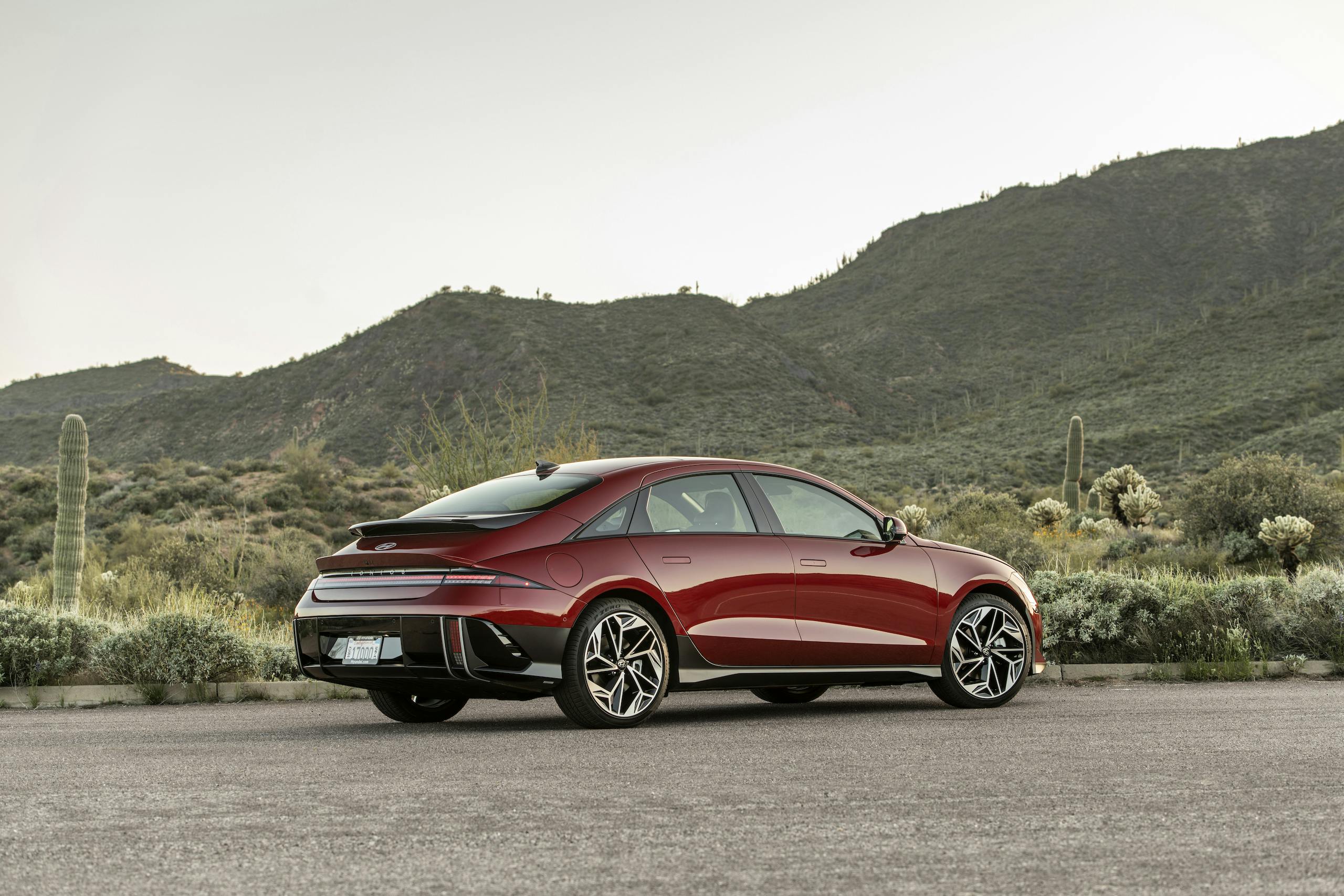
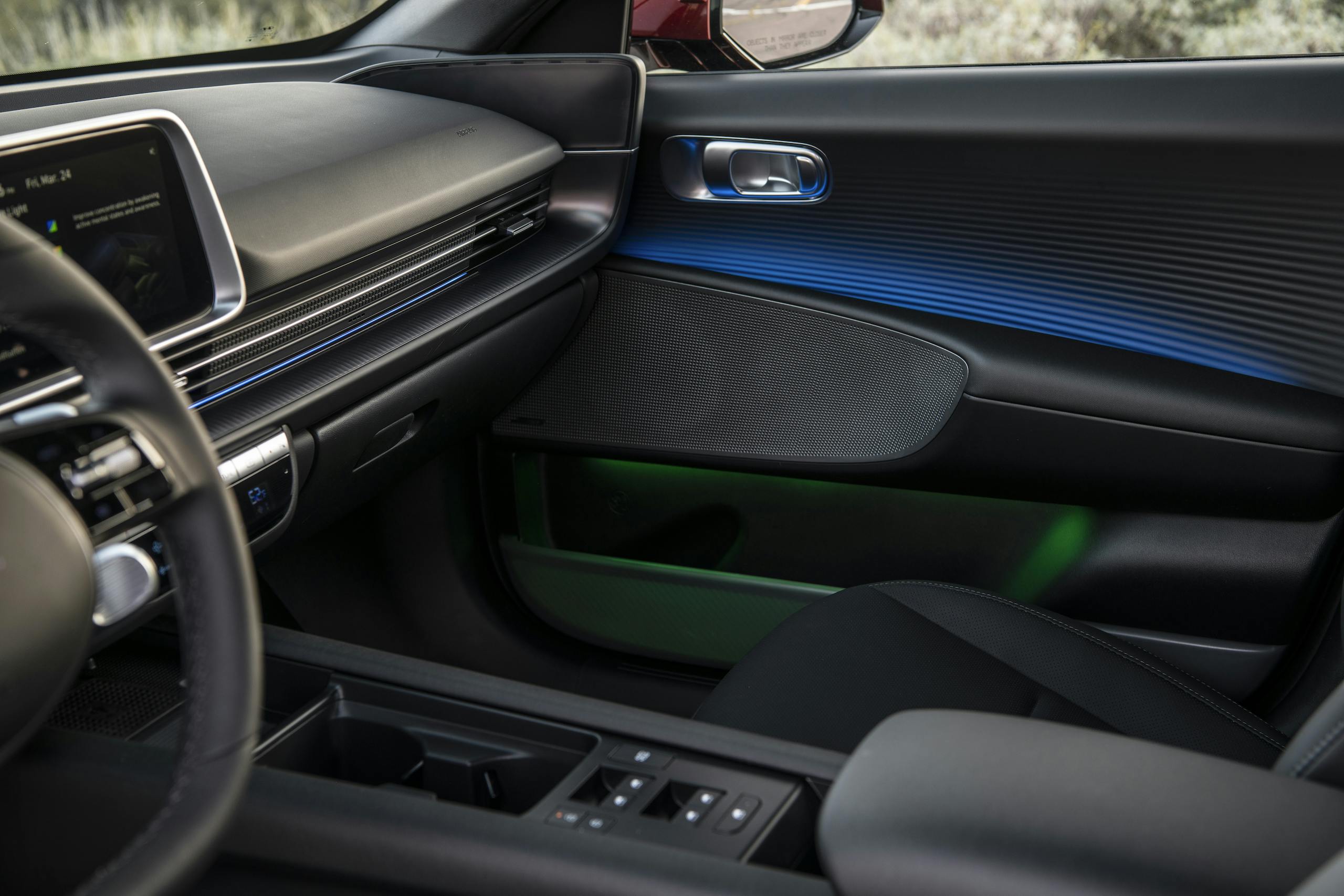
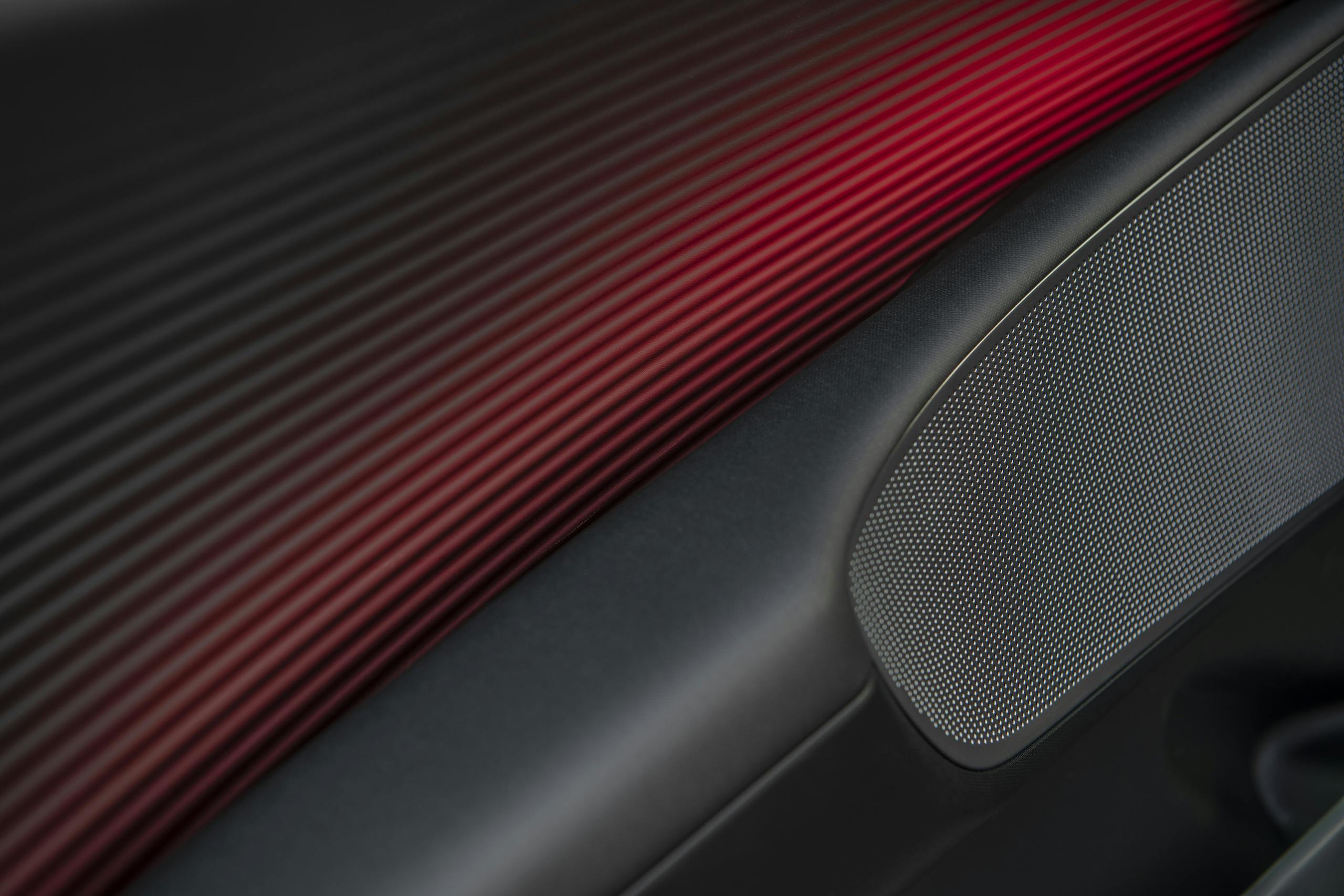
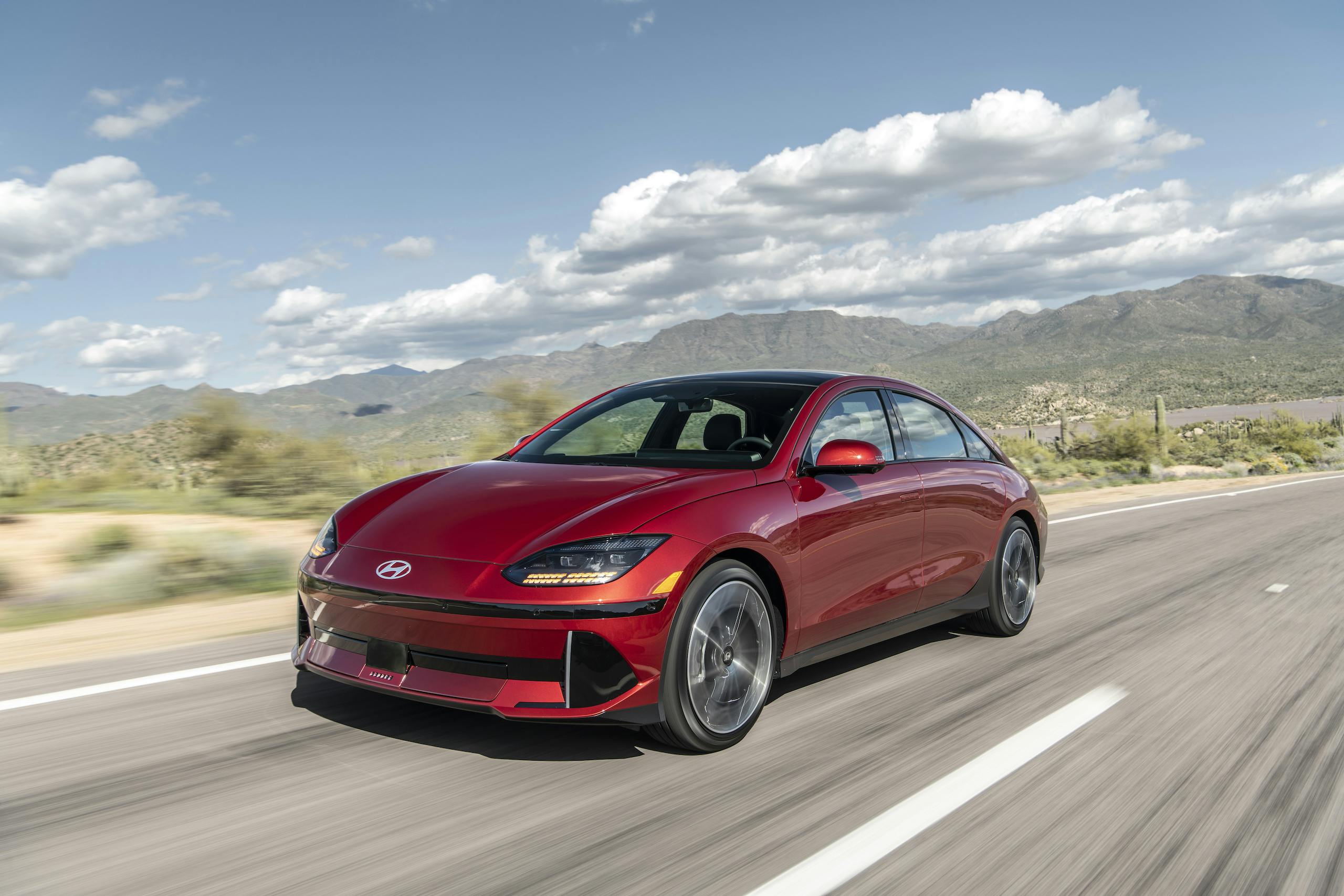
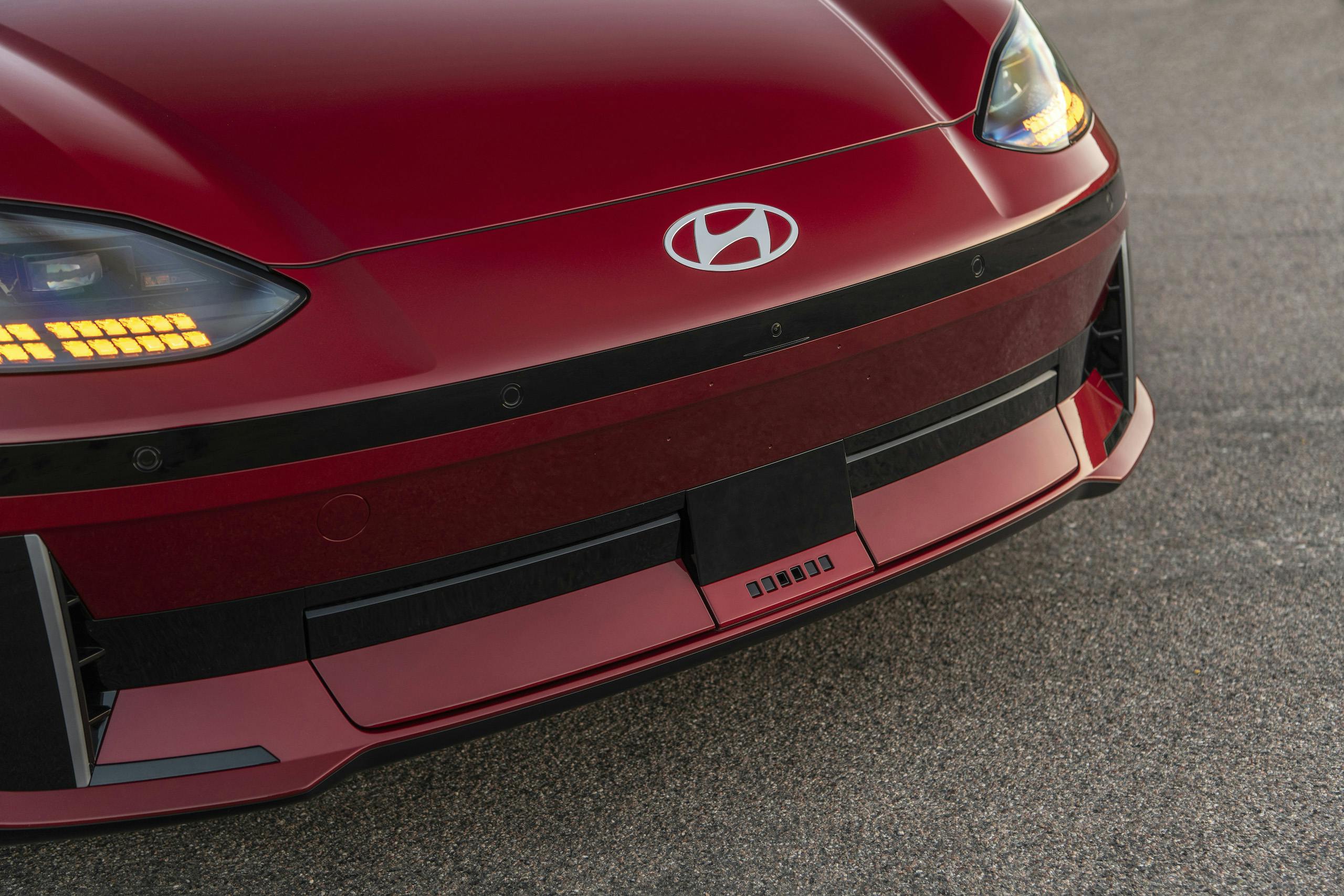
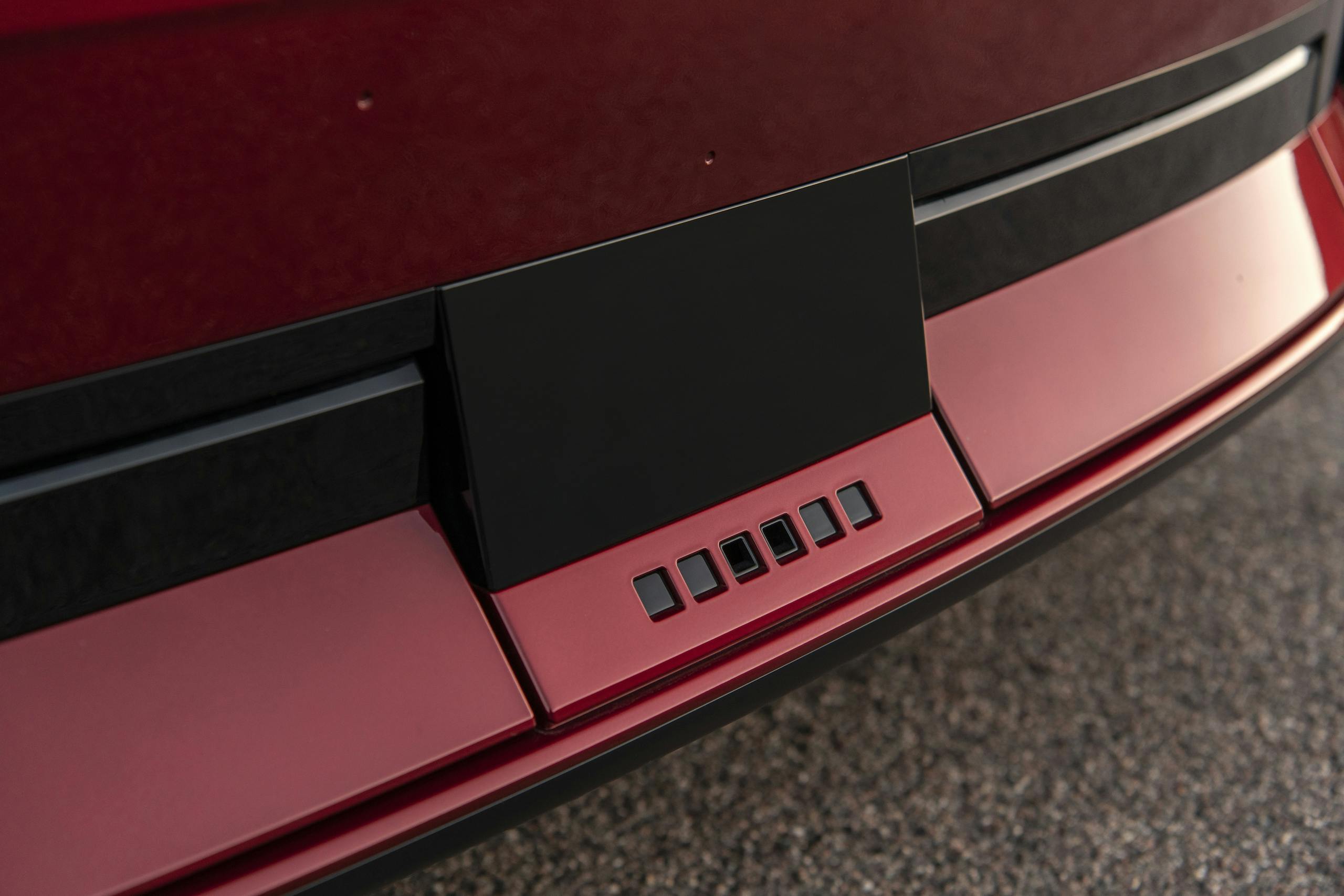
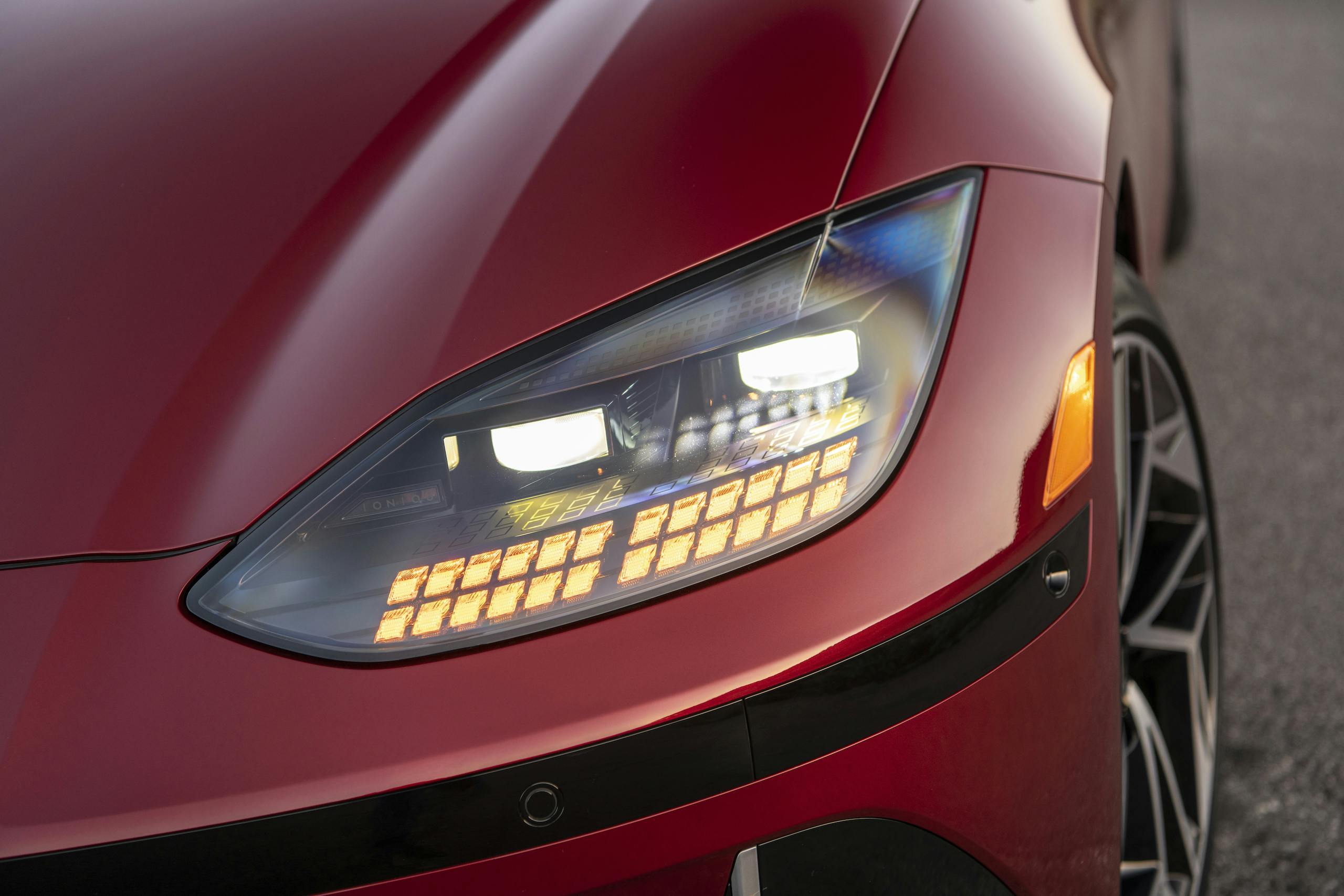
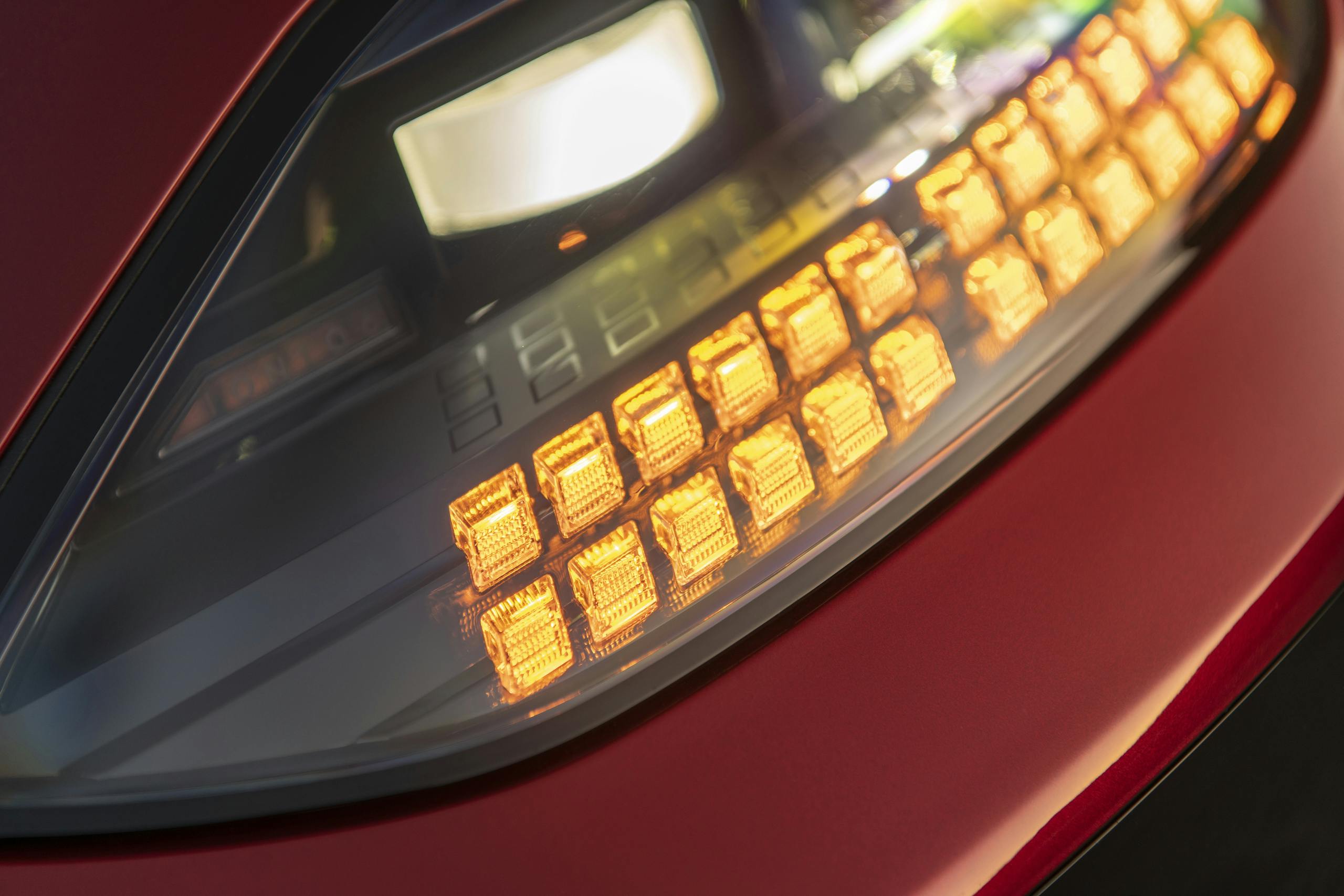
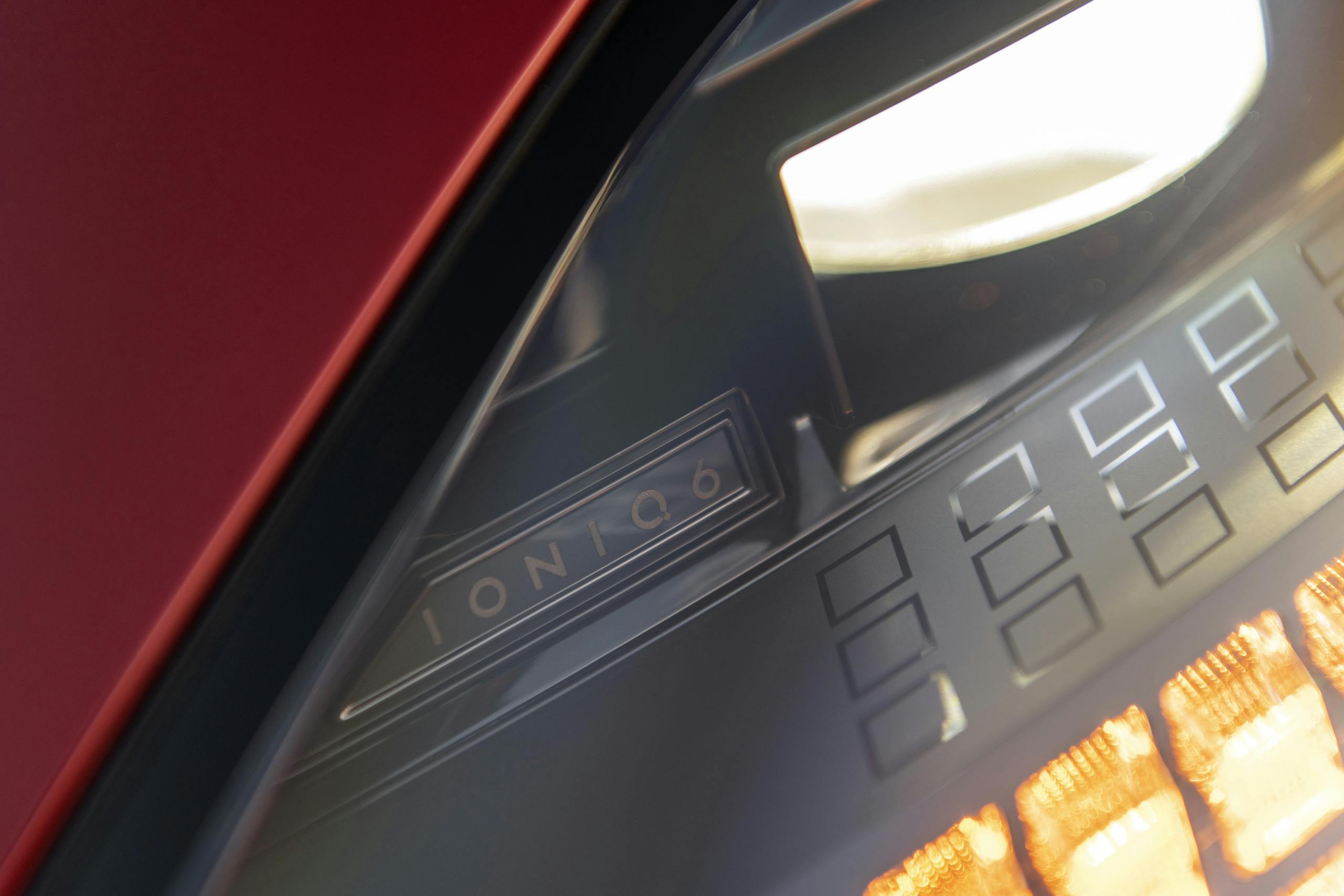
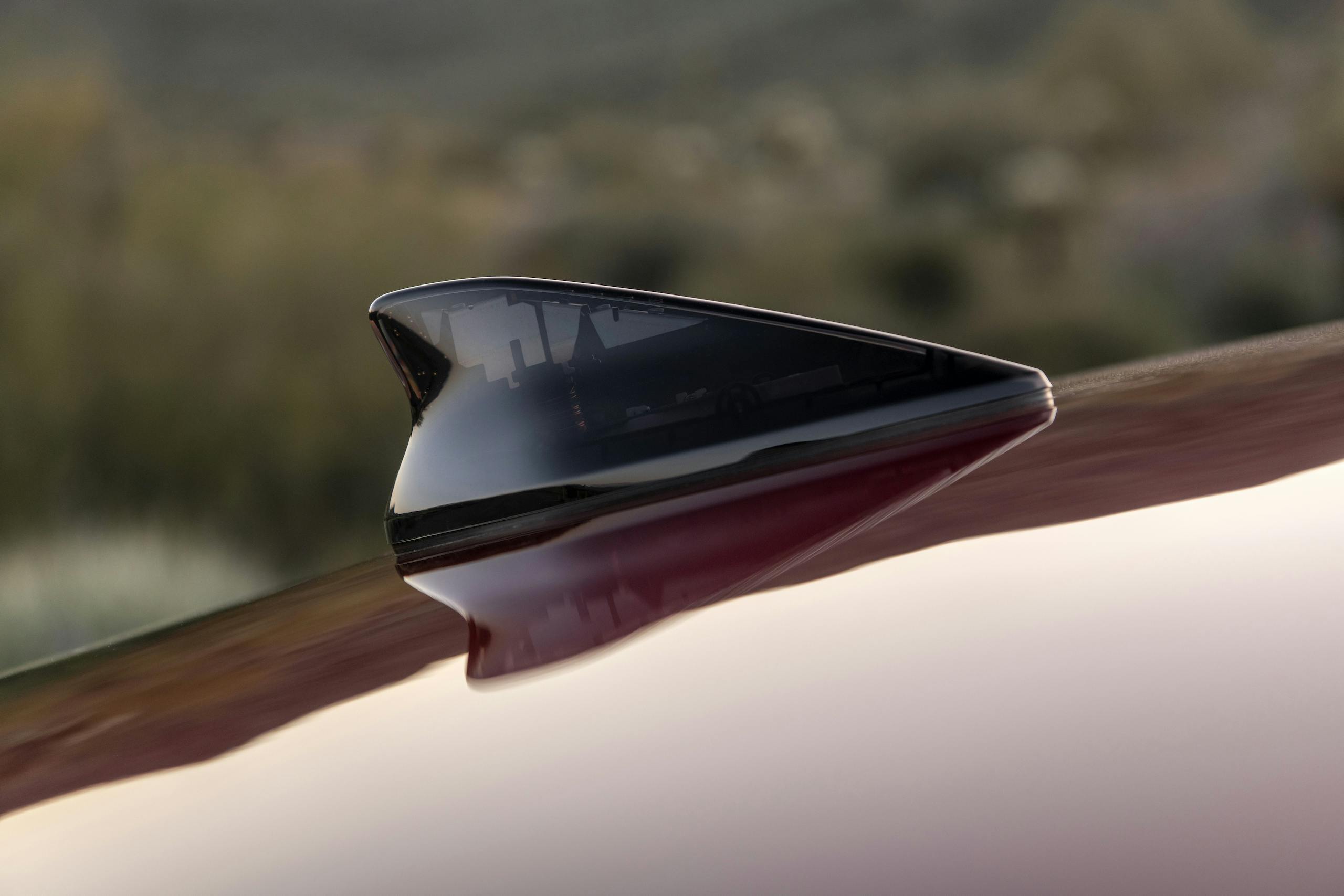
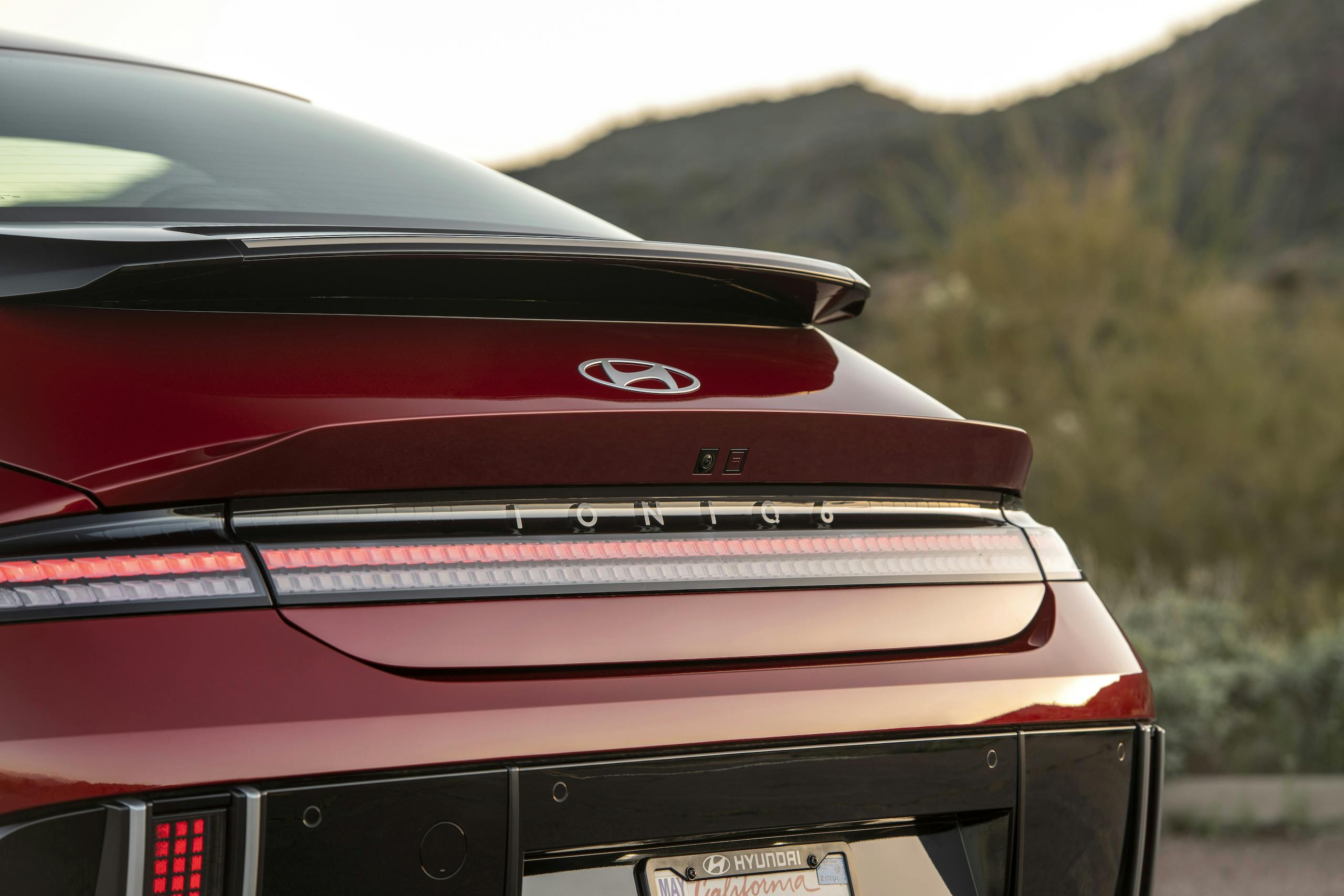
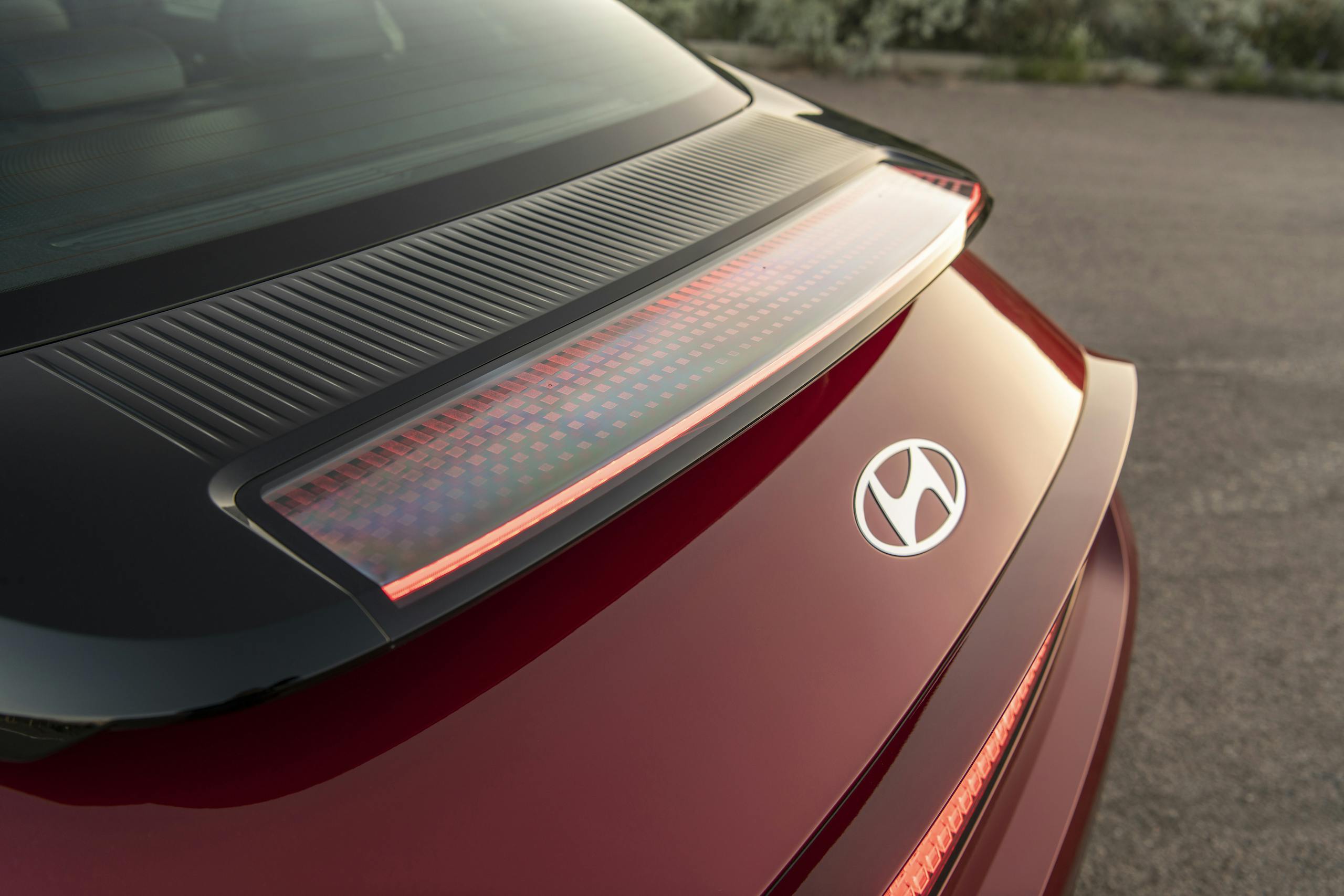
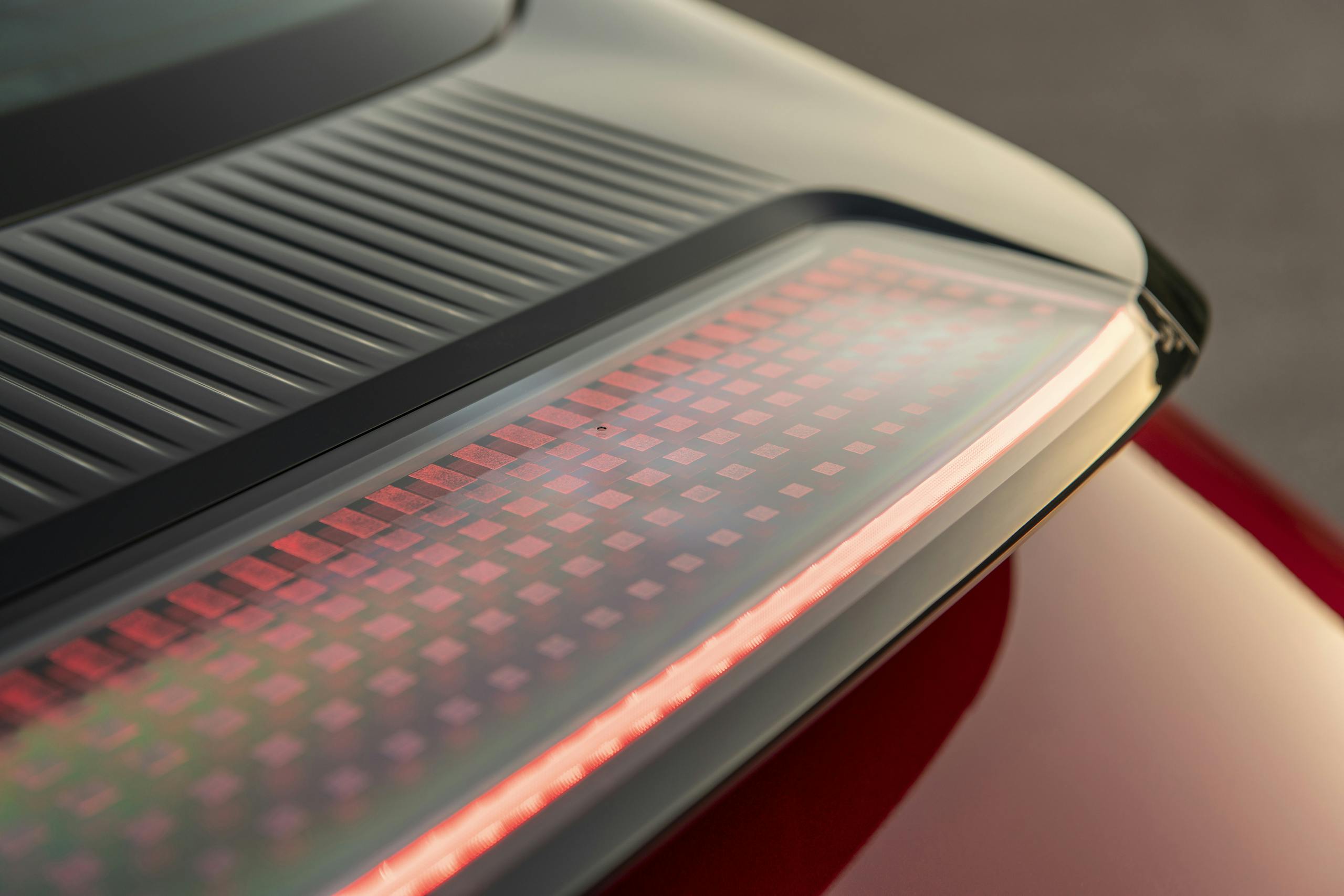
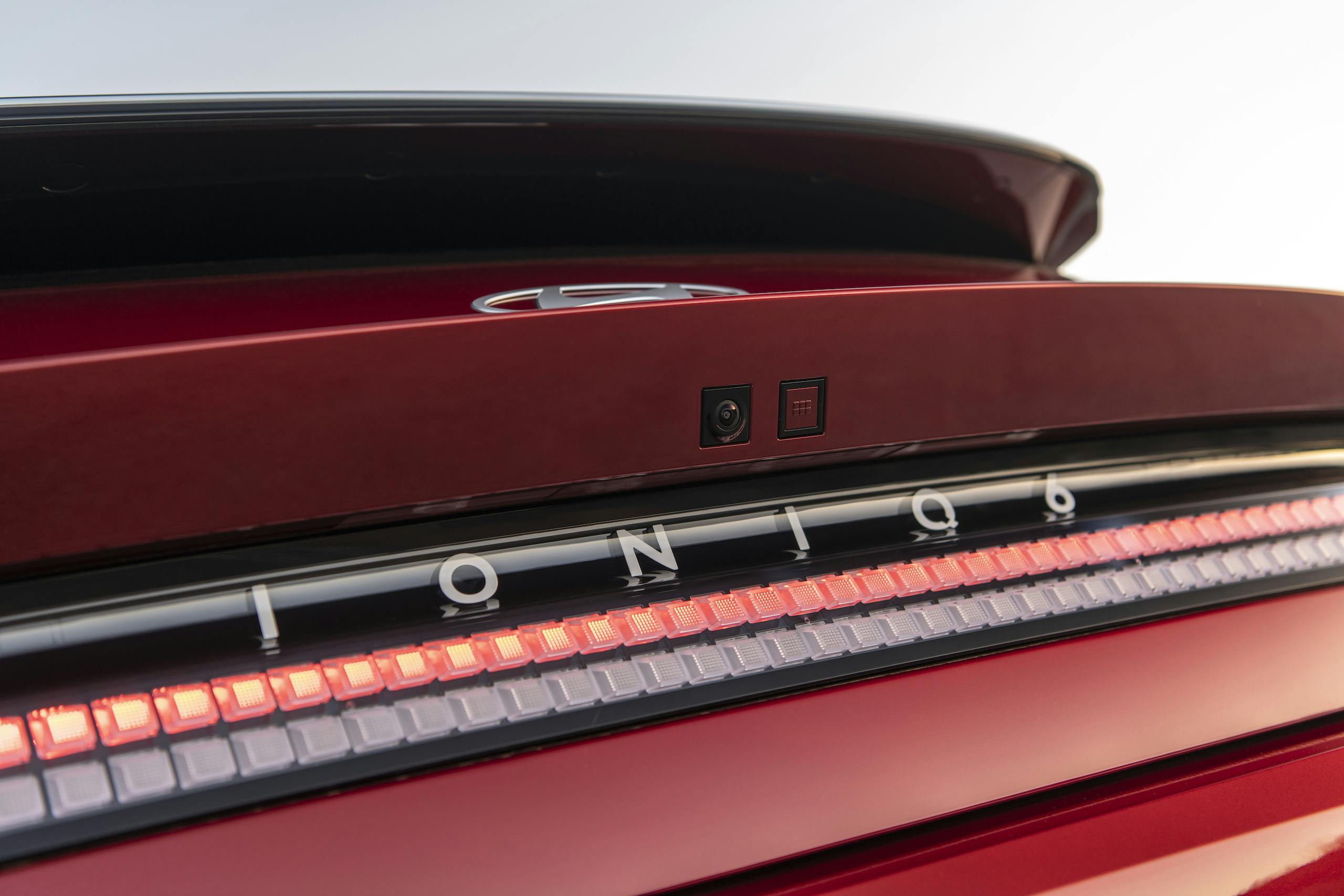

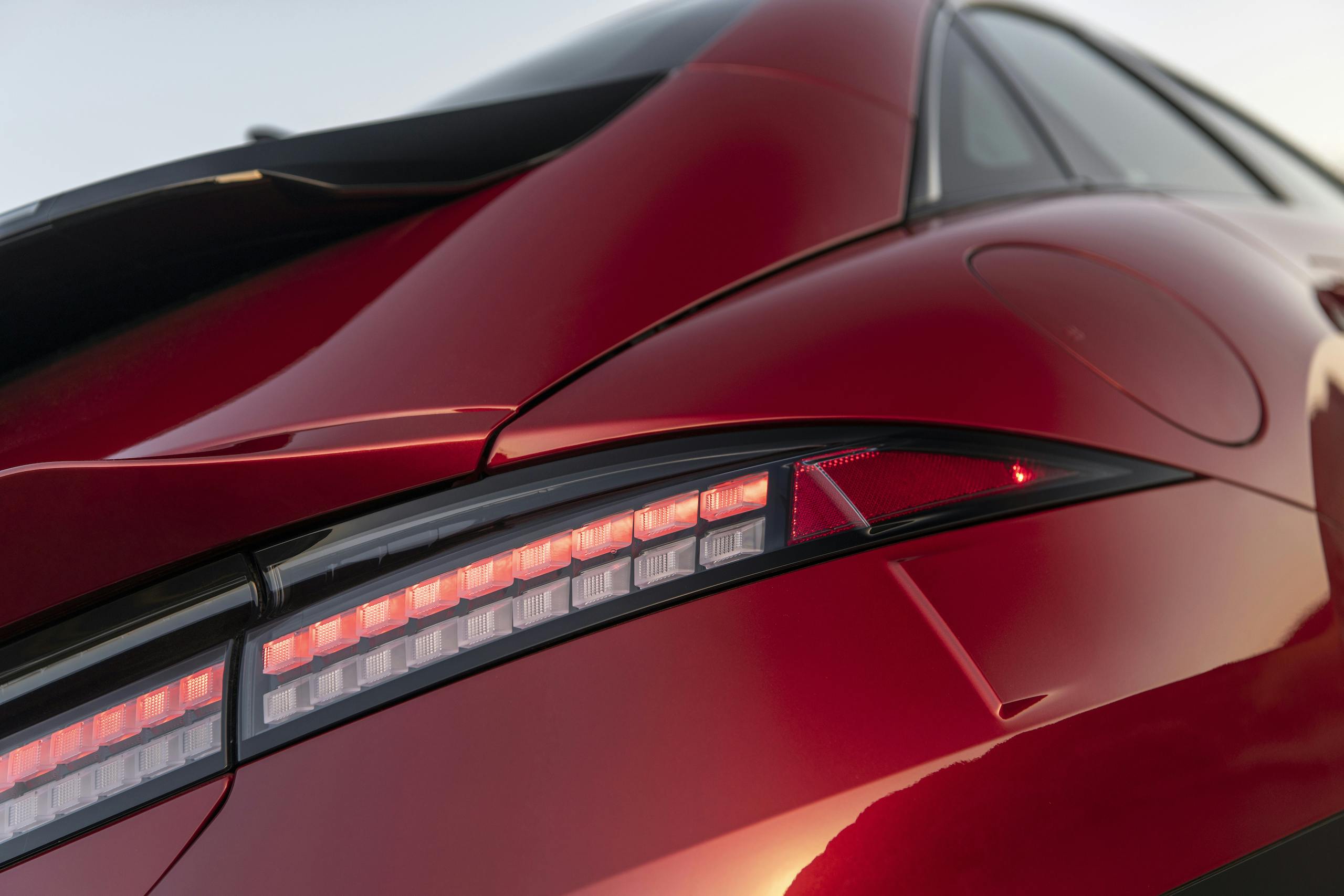

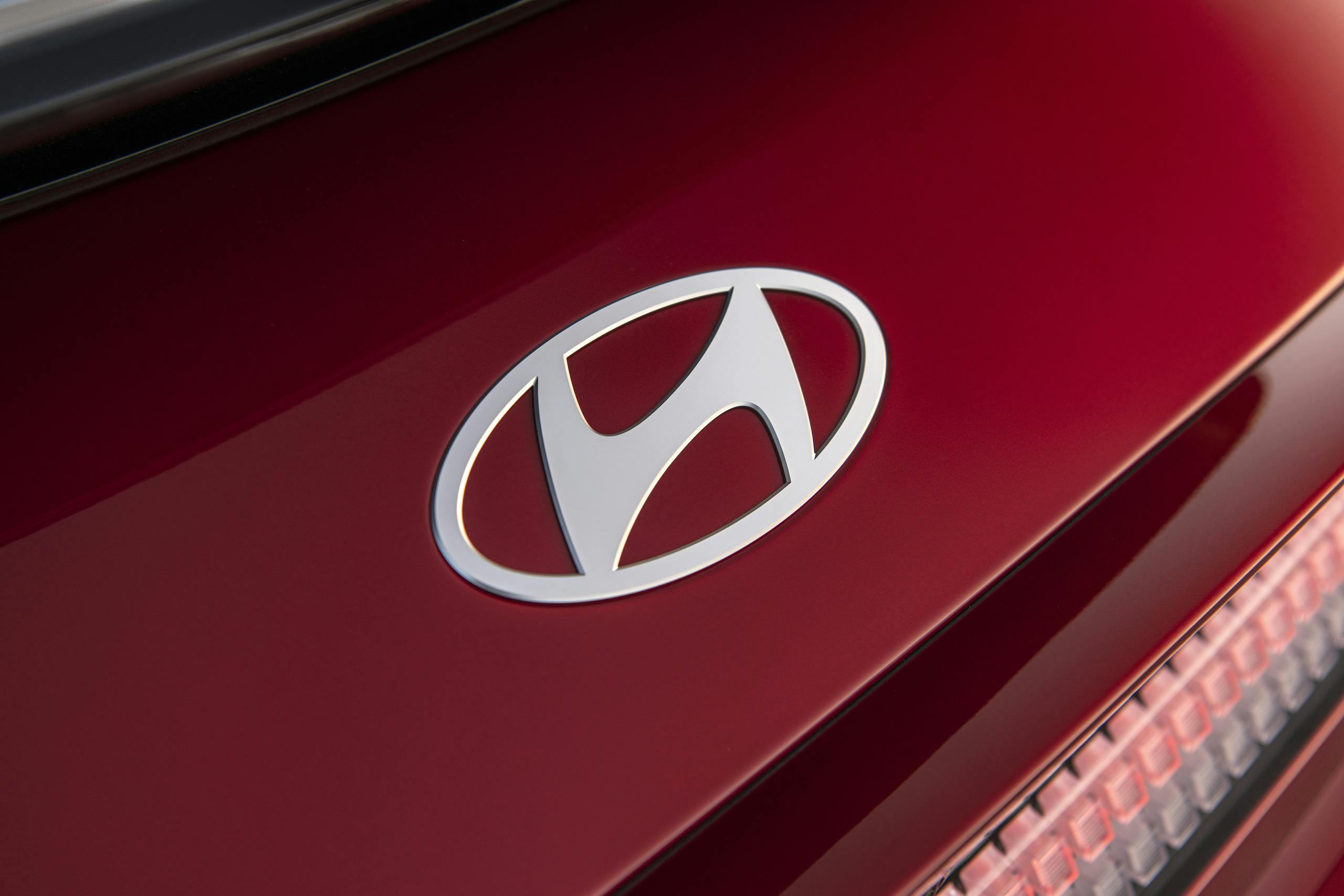

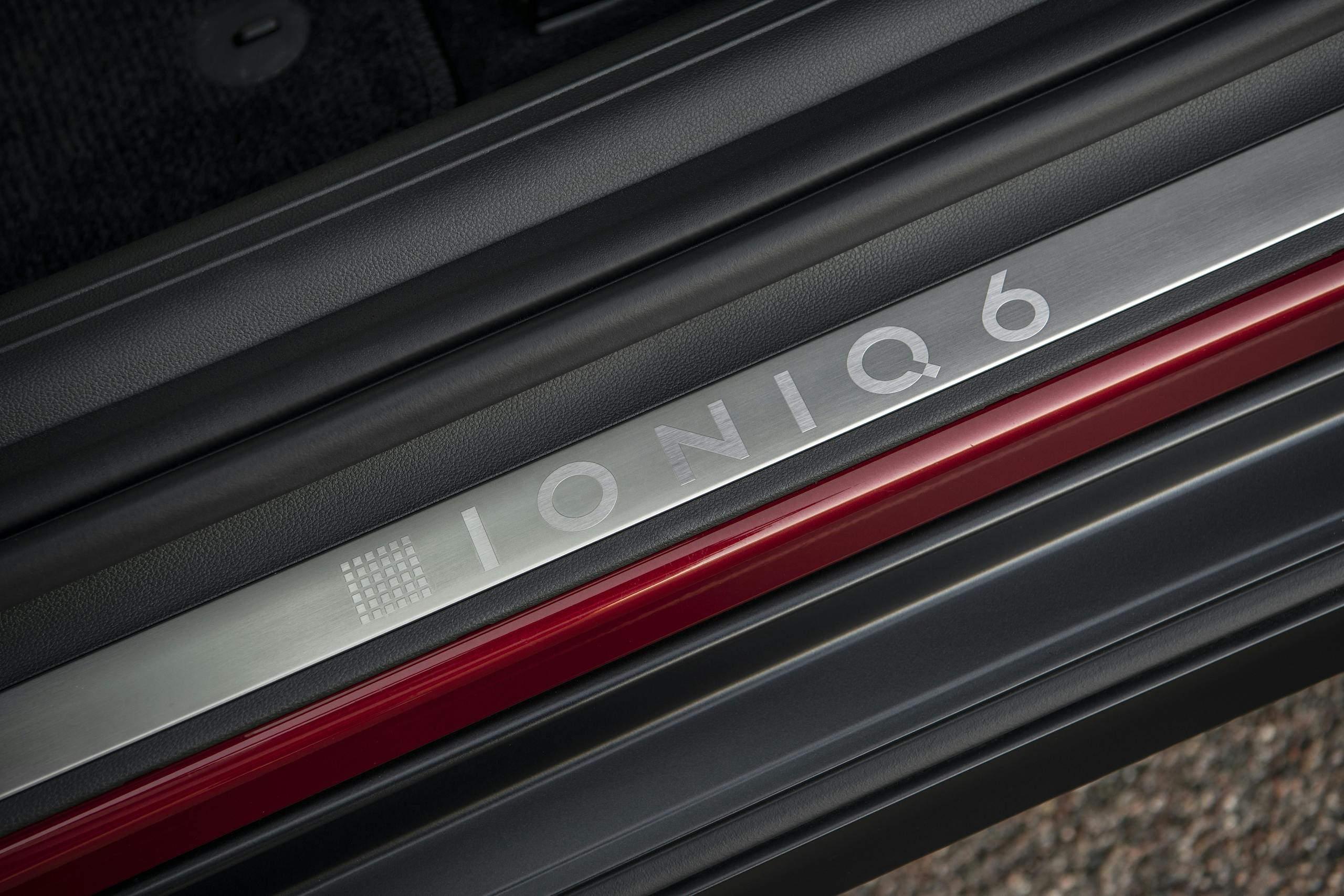

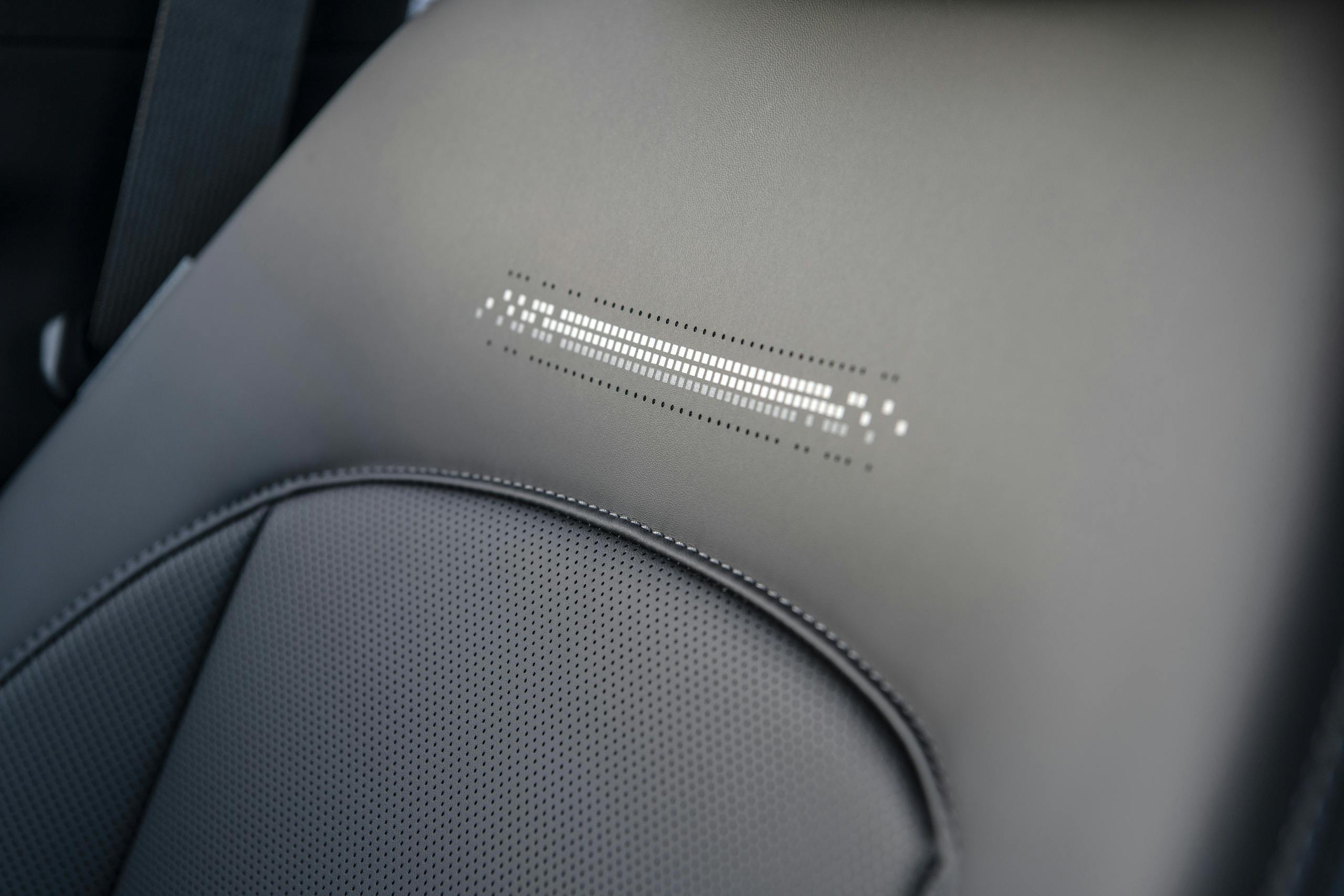
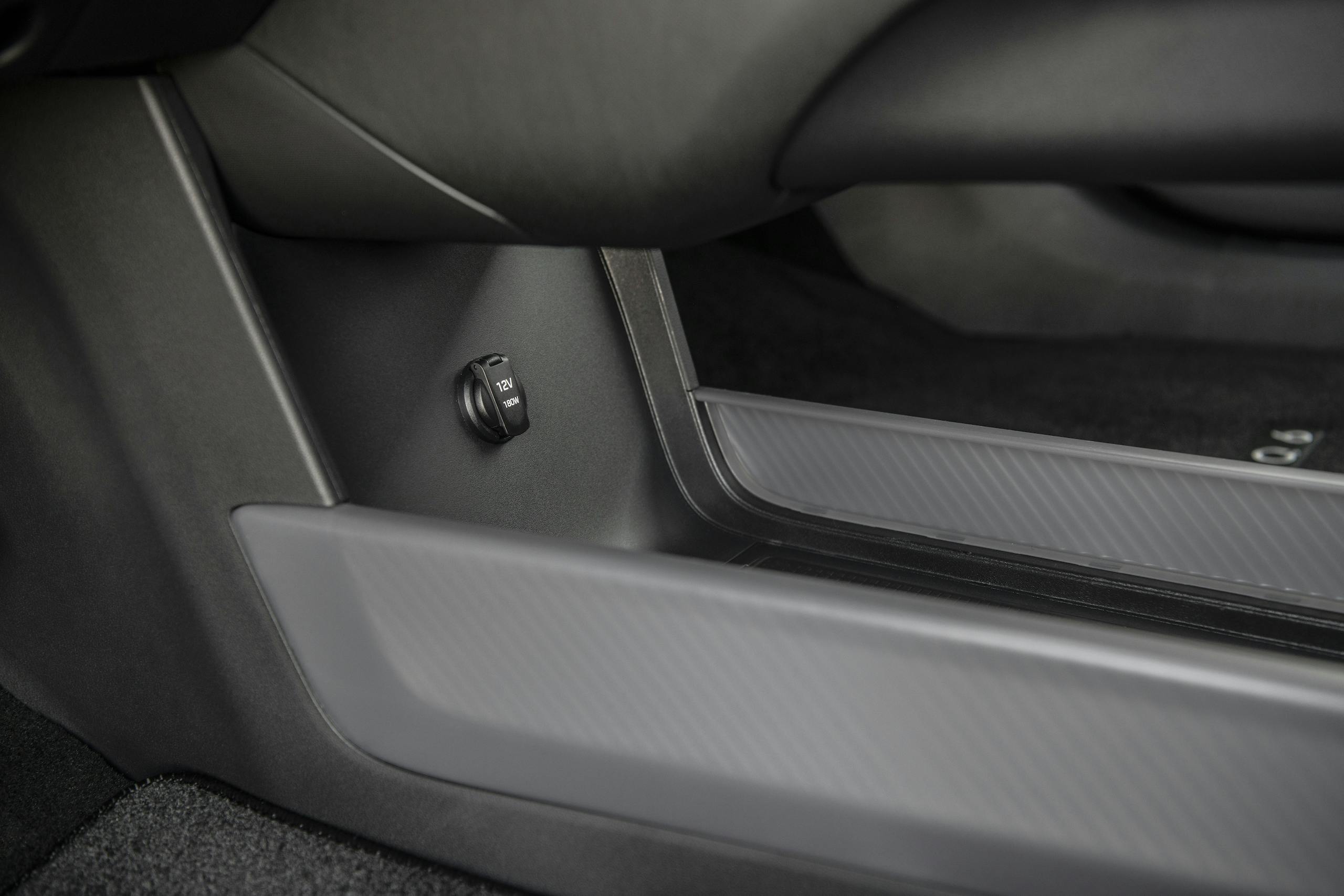
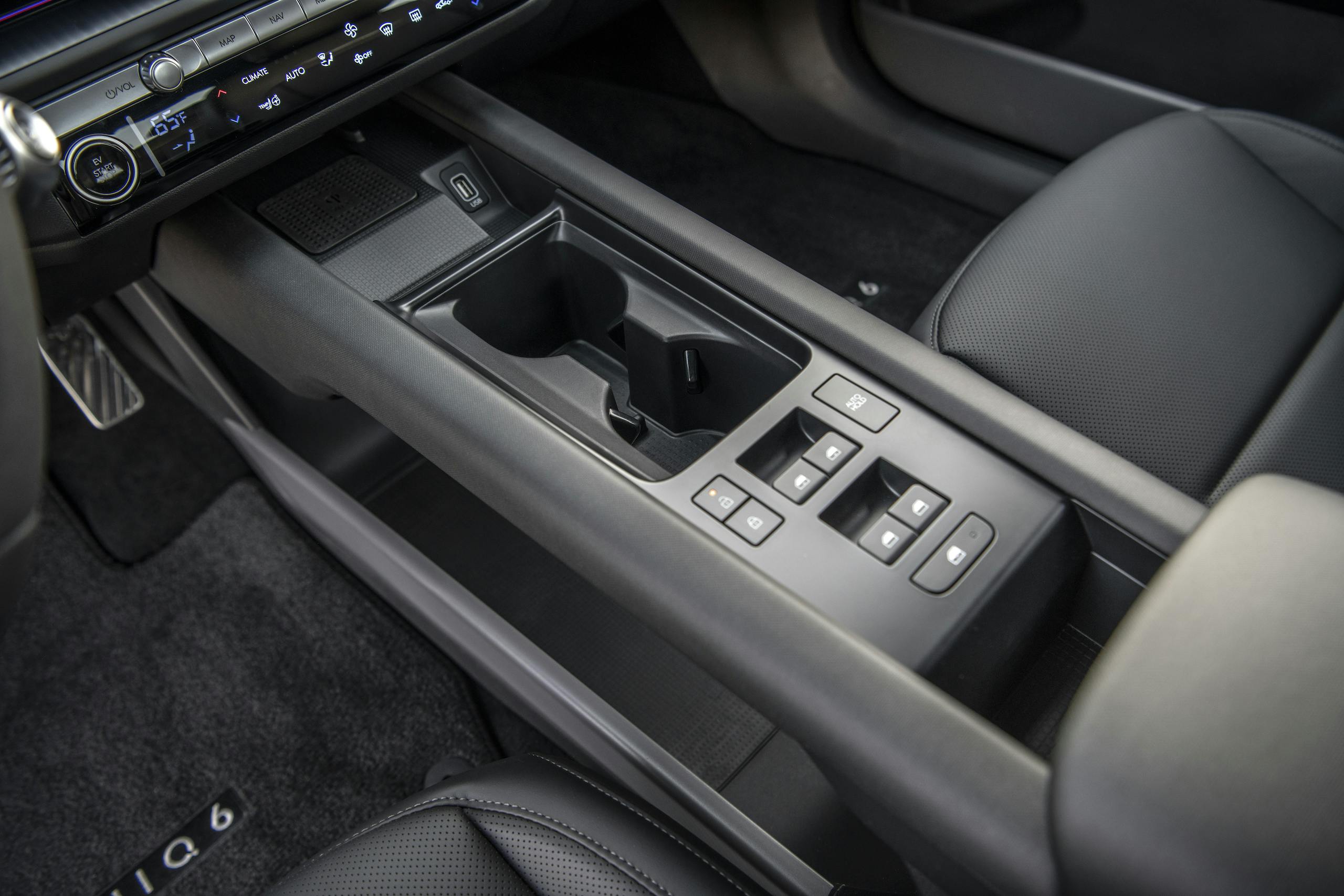
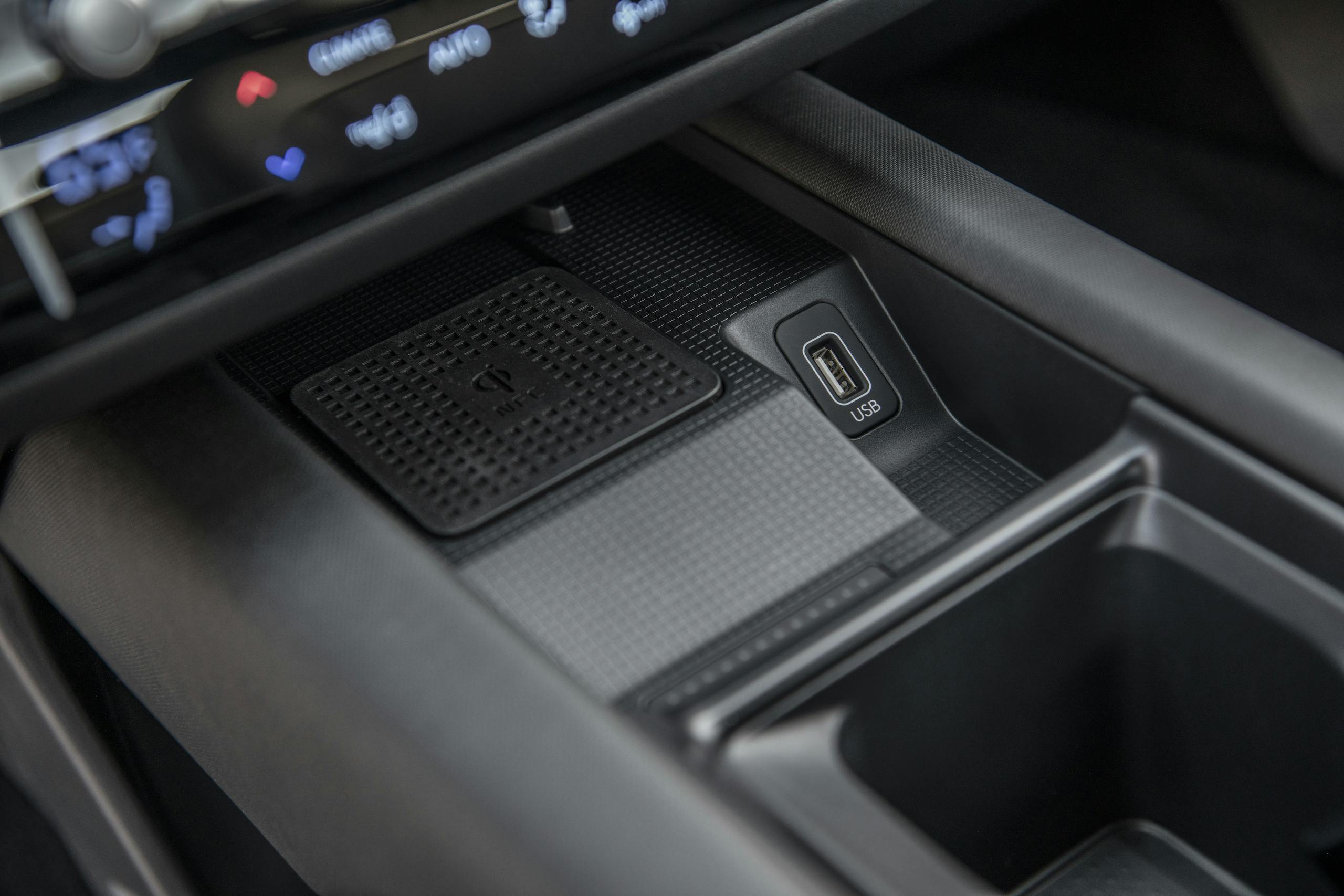


Your colleague is missing the point. If manufacturers really want EV market share, they need to make small, efficient, affordable EVs. Who cares if it has 450tq and can hit 60 in under 5 seconds? Aside from journos and 3% of the car buying population, very few people. Make one that will do 200 miles on a charge, charge to a usable range on any power supply, and come in under $30k.
The Chevy Bolt (and EUV variant) will do 200 miles on a charge, charges kinda-okay on a variety of power supplies (but much slower than this Ioniq 6), and realistically can be had for under $30k before considering the federal tax rebate (which is changing again in like 10 days). There’s even stock of them at dealers.
So is that heater on in the winter, a/c in the summer me thinks not , the range will be hammered